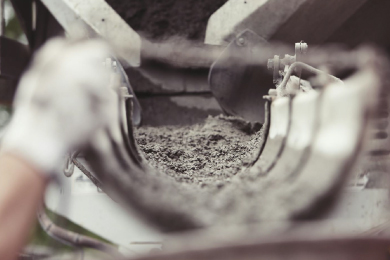The heat is on. There is a growing realisation amongst independent statutory bodies, building owners, and energy sector commentators that the drive towards energy-efficient buildings could be too little, too late – unless, that is, we make serious and immediate efforts to build decarbonisation into existing buildings not just new builds.
We know – we do this stuff every day, in everything from refurbished, vast data centres to beautiful historical properties.
But across the wider industry and market, there’s simply not enough of it going on, and it’s not happening fast enough. So, what, if anything, is to be done?
The urgency behind greener buildings
First, let’s take a look at the gathering pressure for more sustainable existing buildings that is currently issuing from high-ranking sources.
One of these is the Climate Change Committee (CCC), an independent, statutory body established under the Climate Change Act 2008.
“Statutory body” means it has the power to implement legislation on behalf of the State, so when an organisation like that calls on local authorities to accept and scale up low carbon heat sources (such as heat pumps), and to introduce a comprehensive energy-efficient retrofit plan forEngland – as it did in its recent decarbonisation report – it suggests strongly that legal enforcement may follow.
So local authorities need to be listening and acting now.
A coming winter of discontent
But legislation and pressures from above aren’t the only drivers at work here. Reports suggest that Europe is set for a “brutal” winter, and at the same time energy prices are likely to remain not just high, but“unaffordable”.
The talk is of blackouts and rationing, so there’s an immediate need to increase the energy efficiency of both existing and new buildings to prepare for the cold and save costs wherever possible.
It’s a herculean task. The UK’s built environment is responsible for 25% of theUK’s greenhouse gas emissions. Figures from the CCC suggest that buildings are responsible for 59%of UK electricity consumption, equivalent to a substantial further chunk of indirect emissions, stemming from appliances and lighting in homes, and cooling, catering and ICT equipment in non- residential buildings.
It's all stuff we can’t do without – but then the flip side of this is that making energy-efficient changes here, right at the heart of where the highest consumption occurs, will have the greatest positive effect on our budgets - and on our planet.
Conservation versus sustainability
But despite the urgency we face in our efforts to make buildings greener and more efficient, it’s not all down to energy use equations, powerful software, and clever green technologies. Aesthetics, liveability, and conservation all join the debate, and the results can be frustrating, particularly with regard to buildings of historic interest.
Take the case of King’s College Chapel in Cambridge, for example – a stunning, huge, 15th century building that local planners are considering equipping with solar panels as part of a complete re-roof.
The panels could reduce the building’s grid electricity use by 105,000 kWh a year – the equivalent of 36 average houses’ annual power consumption - saving many thousands of pounds and considerable amounts of indirect carbon emissions. Yet Historic England has objected to the plans, on the basis that they are not in keeping with the building’s historical and aesthetic character.
Nimbyism, objection, and misunderstanding
It would be unkind and unjust to call this nimby (not in my back yard)-ism, but there isa kind of not-in-my-beautiful-area-ism going on here. And although it’s certainly well-meaning and principled, it threatens to stand in the way of sustainability progress.
And it needn’t. The planners involved in the chapel project, for example, have stressed that the panels would be “discreet” in character, and the reality of historical buildings is in any case that their exteriors have usually been updated many times before.
The chapel’s roof, for example, is a mere 150 years old, and the new roof that replaces it will show different detail – yet there has been no objection to that!
Equally, other historic buildings in the UK have embraced the need for change and responded positively to it. Chester, Salisbury, Bradford, and Gloucester cathedrals are all either installing or already using solar panels, and YorkMinster’s application for them has been approved by the local council.
And from our own experience working on every type of historical building from stately homes to stable blocks, we know that it is possible to keep interventions to the building to a minimum to allow the original fabric and character to be retained to the fullest extent, whilst also providing suitable designs, solutions, and services for modern, sustainable, energy-efficient use.
Go retro to move forward
In short, regulatory interest and a gathering winter storm mean there can be no delay in acting to retrofit our existing buildings to make them more energy-efficient.
But equally, there can and should be no squeamishness about retrofitting buildings that are particularly large or particularly old.
And as construction is the phase of any building that uses most energy and releases most emissions, the greenest potential for buildings is in those that already exist.
Retrofitting energy efficiency isn’t backward-looking – it’s a roadmap to a better future.
Get in touch to find out how we can help you achieve energy-efficiency for your building.





.png)




